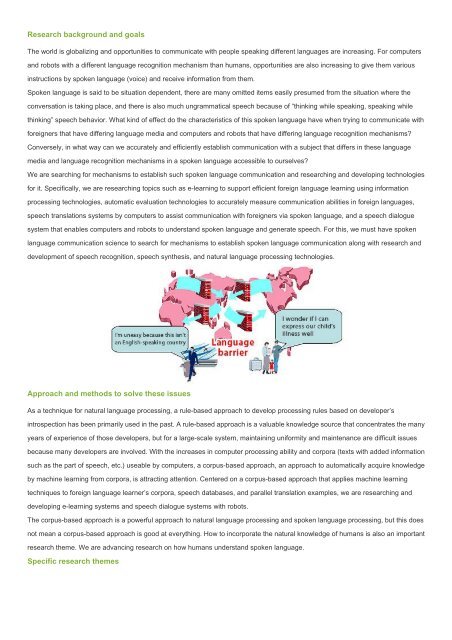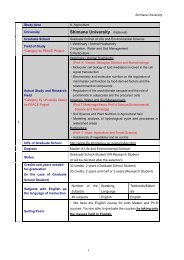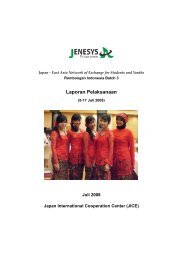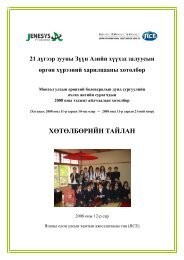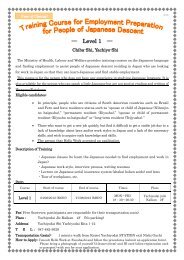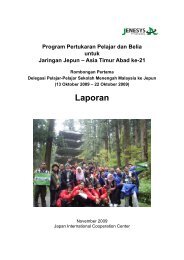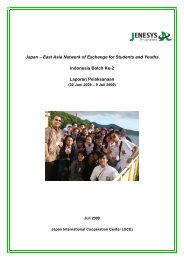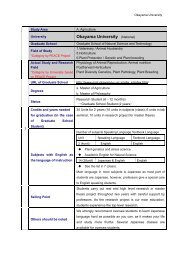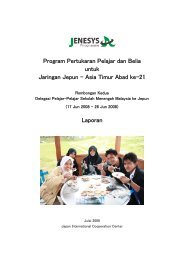Doshisha University (Private)
Doshisha University (Private)
Doshisha University (Private)
Create successful ePaper yourself
Turn your PDF publications into a flip-book with our unique Google optimized e-Paper software.
Research background and goals<br />
The world is globalizing and opportunities to communicate with people speaking different languages are increasing. For computers<br />
and robots with a different language recognition mechanism than humans, opportunities are also increasing to give them various<br />
instructions by spoken language (voice) and receive information from them.<br />
Spoken language is said to be situation dependent, there are many omitted items easily presumed from the situation where the<br />
conversation is taking place, and there is also much ungrammatical speech because of “thinking while speaking, speaking while<br />
thinking” speech behavior. What kind of effect do the characteristics of this spoken language have when trying to communicate with<br />
foreigners that have differing language media and computers and robots that have differing language recognition mechanisms?<br />
Conversely, in what way can we accurately and efficiently establish communication with a subject that differs in these language<br />
media and language recognition mechanisms in a spoken language accessible to ourselves?<br />
We are searching for mechanisms to establish such spoken language communication and researching and developing technologies<br />
for it. Specifically, we are researching topics such as e-learning to support efficient foreign language learning using information<br />
processing technologies, automatic evaluation technologies to accurately measure communication abilities in foreign languages,<br />
speech translations systems by computers to assist communication with foreigners via spoken language, and a speech dialogue<br />
system that enables computers and robots to understand spoken language and generate speech. For this, we must have spoken<br />
language communication science to search for mechanisms to establish spoken language communication along with research and<br />
development of speech recognition, speech synthesis, and natural language processing technologies.<br />
Approach and methods to solve these issues<br />
As a technique for natural language processing, a rule-based approach to develop processing rules based on developer’s<br />
introspection has been primarily used in the past. A rule-based approach is a valuable knowledge source that concentrates the many<br />
years of experience of those developers, but for a large-scale system, maintaining uniformity and maintenance are difficult issues<br />
because many developers are involved. With the increases in computer processing ability and corpora (texts with added information<br />
such as the part of speech, etc.) useable by computers, a corpus-based approach, an approach to automatically acquire knowledge<br />
by machine learning from corpora, is attracting attention. Centered on a corpus-based approach that applies machine learning<br />
techniques to foreign language learner’s corpora, speech databases, and parallel translation examples, we are researching and<br />
developing e-learning systems and speech dialogue systems with robots.<br />
The corpus-based approach is a powerful approach to natural language processing and spoken language processing, but this does<br />
not mean a corpus-based approach is good at everything. How to incorporate the natural knowledge of humans is also an important<br />
research theme. We are advancing research on how humans understand spoken language.<br />
Specific research themes


